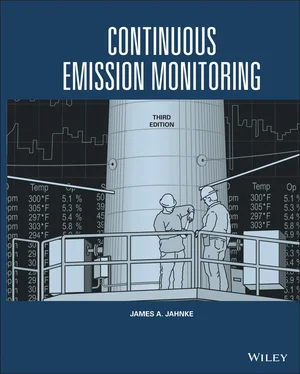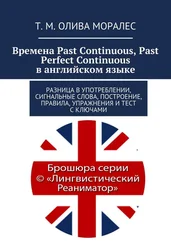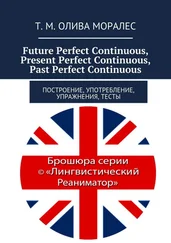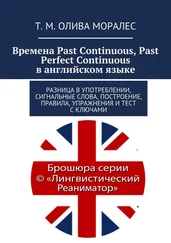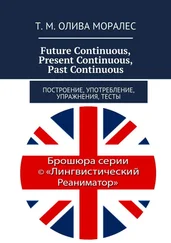James A. Jahnke - Continuous Emission Monitoring
Здесь есть возможность читать онлайн «James A. Jahnke - Continuous Emission Monitoring» — ознакомительный отрывок электронной книги совершенно бесплатно, а после прочтения отрывка купить полную версию. В некоторых случаях можно слушать аудио, скачать через торрент в формате fb2 и присутствует краткое содержание. Жанр: unrecognised, на английском языке. Описание произведения, (предисловие) а так же отзывы посетителей доступны на портале библиотеки ЛибКат.
- Название:Continuous Emission Monitoring
- Автор:
- Жанр:
- Год:неизвестен
- ISBN:нет данных
- Рейтинг книги:4 / 5. Голосов: 1
-
Избранное:Добавить в избранное
- Отзывы:
-
Ваша оценка:
- 80
- 1
- 2
- 3
- 4
- 5
Continuous Emission Monitoring: краткое содержание, описание и аннотация
Предлагаем к чтению аннотацию, описание, краткое содержание или предисловие (зависит от того, что написал сам автор книги «Continuous Emission Monitoring»). Если вы не нашли необходимую информацию о книге — напишите в комментариях, мы постараемся отыскать её.
The new edition of the only single-volume reference on both the regulatory and technical aspects of U.S. and international continuous emission monitoring (CEM) systems Continuous Emission Monitoring
Continuous Emission Monitoring:
Continuous Emission Monitoring, Third Edition
Continuous Emission Monitoring — читать онлайн ознакомительный отрывок
Ниже представлен текст книги, разбитый по страницам. Система сохранения места последней прочитанной страницы, позволяет с удобством читать онлайн бесплатно книгу «Continuous Emission Monitoring», без необходимости каждый раз заново искать на чём Вы остановились. Поставьте закладку, и сможете в любой момент перейти на страницу, на которой закончили чтение.
Интервал:
Закладка:
Part 51 Appendix P – Minimum Requirements for Existing Sources . In Appendix P of Part 51, the U.S. EPA established minimum CEM requirements for existing sources (U.S. EPA 2020a). The rules, published in the 1970s, required state CEM requirements to be written by 1976 for only four source categories: fossil‐fuel‐fired steam generators, sulfuric acid plants, nitric acid plants, and petroleum refineries. Even so, these particular minimum requirements only applied to larger sources and allowed many exemptions, such as not requiring SO 2monitoring unless SO 2control systems are installed. The “existing sources” referenced in Part 51 were those built before 1971, many of which are no longer operating by having become subject to reclassification as a “new source” after modification, or are otherwise subject to acid rain, air toxics, and other rules written after promulgation of the 1990 Clean Air Act Amendments. Once in the Code of Federal regulations, rules, test methods, and procedures tend not to go away. They layer upon themselves; so, when reading them, attention must be paid to applicability and other conditions of the requirements.
TABLE 2‐2 State CEM Program Options
| Federal Programs Delegated to States | |||||||
|---|---|---|---|---|---|---|---|
| SIP Rulemaking | Permit Programs | NSPS Delegation | SIP Rulemaking | Compliance Assurance Monitoring | Waste Incineration | Trading Programs | Discretionary Programs |
| Part 51 Part 52 | Parts 70 & 71 | Part 60 | Part 62 existing sources | Part 64 | Part 266/503 | Court Actions | |
| Utilities Pet. Ref. HNO 3H 2SO 4PSD NSR | Major sources | NSPS categories ( Table 2‐1) | Hazardous waste incinerators/ sewage sludge incineration | Major sources | Hazardous waste incinerators/ sewage sludge incineration | CSAPR WCI (CA) RGGI (NE States) HRVOC (TX) | Variances orders agreements |
Part 52 – Approval and Promulgation of implementation Plans Part 52.21 – Prevention of Significant Deterioration (PSD) For any source or a major modification to an existing source, located in an attainment area, where ambient air standards are met, a PSD permit must be granted. Once an area is in attainment, it is possible that the construction of a new source or modification of an existing source could lead to “significant” emissions that bring the area into nonattainment. To avoid this possibility a permit must be obtained by the source prior to the construction or modification. It must be shown whether a significant increase of emissions will occur, through a technical analysis and an air quality modeling, as specified in Part 52.21. One of the requirements of Part 52.21 is that the after construction or modification, the source must monitor mass emissions in tons per year of any pollutant designated under the New Source Review program for at least five years.
40 CFR Part 62 – Federal Requirements for Existing Units Not Covered by a State Plan
Part 62 gives requirements for existing sources that are not regulated by a state or tribal plan. The Subparts of Part 62 give Federal plans that can be delegated to the states for implementation by existing stationary sources. The applicable plan must be included in the Title V Permit for the affected source. Part 62 addresses a variety of incineration facilities listed in Table 2‐3. For a number of the sources, options are offered for using CEM systems instead of periodic performance testing.
40 CFR Part 70 – Title V Operating Permits
Congress established the Title V Operating Permit Program under the 1990 Clean Air Act Amendments. Under the program, major sources are required to obtain operating permits, operate in compliance with the permit, and certify annually that they are in compliance with the permit requirements. Most permits are issued by state and local agencies following the requirements of 40 CFR Part 70. Federal permits can be issued following 40 CFR Part 71.
TABLE 2‐3 Summary of 40 CFR 62 Monitoring Requirements for Existing Units Not Covered by an Approved and Effective State or Tribal Plan
| Source Category | Part 62 Subpart | Affected Units | Effective Date a , b | CEM Requirements | CFR Monitoring Reference |
|---|---|---|---|---|---|
| Large municipal waste combustion units | FFF | > 250 tpd | Constructed before 9/20/94 | Opacity As per 40 CFR 60.8b Subpart Eb | 62.14105 62.14109 60.58b |
| Hospital/Medical/Infectious Waste Incinerator (HMIWI) | HHH | Large Medium Small Small Rural | Constructed before 12/1/08 | Options for SO 2, NO x, CO, HCl, O 2, D/F, PM CEMS, Bag leak detector | 62.14452 |
| Commercial and Industrial solid waste Incinerators (CISWI) | III | Combustion Units | Constructed before 11/30/99 | Bag leak detector if FF | 62.14690 |
| Small municipal waste combustion units | JJJ | >35 tpd < 250 tpd | Constructed before 8/30/99 4/6/10 a | Opacity SO 2, CO NO x(Class 1) bO 2or CO 2 | 62.15170 62.15175 |
| Sewage sludge incineration units | LLL | Combustion units | Constructed before 10/04/10 | Bag leak detector if FF Options for SO 2, NO x, CO, HCl, O 2or CO 2, D/F | 62.15960 62.15980 62.16015 |
aModification began before this date
bUnits > 250 tpd capacity
States issue operating permits for both existing and new stationary sources.
An operating permit may include conditions that require the installation of CEM systems. States may prepare rules for existing sources that are more stringent than those promulgated by the federal agency (Kerstetter 1985). As a result, the stringency of state CEM rules may extend beyond those established for similar sources regulated under NSPS. Monitoring of gases such as HCl or volatile organic compounds may be required, or process cutoffs for excess emissions or real‐time telemetry may be required in the permit. Sources often agree to very stringent CEM requirements to expedite approval of the operating permit.
Federal Programs Delegated to the States
Most states have received delegation by the U.S. EPA to regulate the emission sources affected by the following federal rules:
Part 60 New Source Performance Standards
Part 64 Compliance Assurance Monitoring.
Parts 266 and 503 Hazardous and Municipal Waste Incineration
In implementing these programs, states have developed regulations to assure that affected sources have installed required CEM systems, to see that they are properly certified, and to receive and process excess emission reports and compliance data as required by the applicable rule.
Part 96 Cross‐State Air Pollution Rule (CSAPR)
The Cross‐State Air Pollution Rule, of 40 CFR 96, evolved from the Clean Air Interstate Rule (CAIR) and the NO xBudget Program (NBP). After the promulgation of Part 75 and the implementation of the acid rain program, significant progress was made in reducing SO 2and NO xemissions. However, even with 50% reductions in SO 2and NO xemissions, critical load was not being reached. “Critical load” is the level of emissions below which harmful effects to the environment do not occur. Studies indicated that reductions on the order of 75% on top of the previous 50% reductions would be necessary for SO 2and NO xto meet ambient air standards for ozone and particulate matter, as well as reaching critical load requirements for acid rain. In the East, it was felt that part of the problem was due to the interstate transport of pollutants from the western to eastern parts of the United States. Thus, began the saga of rulemaking that extended from the NO xBudget Trading Program, to the Clean air Interstate Rule, and to the Cross‐State Air Pollution Rule, which is in effect today.
Читать дальшеИнтервал:
Закладка:
Похожие книги на «Continuous Emission Monitoring»
Представляем Вашему вниманию похожие книги на «Continuous Emission Monitoring» списком для выбора. Мы отобрали схожую по названию и смыслу литературу в надежде предоставить читателям больше вариантов отыскать новые, интересные, ещё непрочитанные произведения.
Обсуждение, отзывы о книге «Continuous Emission Monitoring» и просто собственные мнения читателей. Оставьте ваши комментарии, напишите, что Вы думаете о произведении, его смысле или главных героях. Укажите что конкретно понравилось, а что нет, и почему Вы так считаете.
